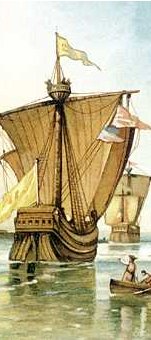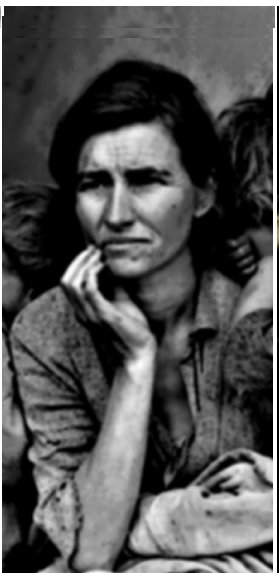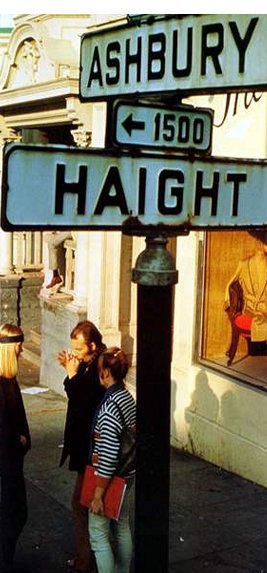The Story of Racial Conflict Joseph Chai
David Wyatt is currently a professor of English at College
Park residing in Charlottesville, Virginia. A progressive historian, Wyatt received
his undergraduate degree from Yale University. As a native of California,
Wyatt is the acclaimed author of many books, many of which specifically focus
on California history. His more notable books include, The Fall into Eden: Landscape and Imagination in California, Out of the
Sixties: Storytelling and the Vietnam Generation,
and of course his most recent, Five Fires: Race, Catastrophe, and the Shaping of
California.
David Wyatt¡¦s Five Fires: Race,
Catastrophe, and the Shaping of California,
focuses on how California became
the way it is today. The book is
written as a poem ¡V ¡§a poem with a central metaphor and a pattern of recurrence
of fire.¡¨1 has as its motif and central metaphor fire. It has been no secret that the
playground for fires in the United States
is California. From the San Diego wild fires in the
1870¡¦s and 1880¡¦s to the recent 2007 wild fire that sparked the greatest
evacuation in California, fires are a motif in every Californians¡¦ life. However, the fires that Wyatt credit
with creating present-day California
are influential events that affected California
in profound ways rather than those instigated by nature.
The first fire to sweep across California
was an accident. The Golden Oats
that are today a common sight in California
were brought inadvertently by the Spanish around the 1770¡¦s in the form of
seeds hidden in the hay of their animals.
By 1850, only eighty years after its introduction, the Golden Oat
dominated the vast grasslands of California. California
developed into the most cultivated region in the world, producing a plethora of
fruit, grains, and trees. However,
the oats discussed by Wyatt had more than an agricultural affect on California. The oats ¡§served as a marker of
historical change¡¨; the rapid spread of the oats paralleled the violent decline
of the Indians as the Spanish took over and then the decline of the Spanish as
the Americans conquered California.2 Like the fires referred to in
the title, Wyatt uses the golden oat as a metaphor for a powerful force capable
of writing history.
The next chapter of history to
transform California was the Gold
Rush. Unlike the golden oats that
spread quietly and silently and created a tinderbox, ¡§the Gold Rush was the
first full California blaze.¡¨3
The fire here was a metaphor for the suddenness of the event. The Gold Rush created the most eclectic
mix the United States
had ever witnessed. The desire for
wealth attracted millions to California
in the 1840¡¦s and 50¡¦s. From
150,000 inhabitants in 1840, California
population exploded to over 500,000 in 1860. However, only 7% of the population was
female, and the lack of woman created a generation of violent men ¡V violent
against each other and against Mother Nature. However, sex was not the only
discrepancy in Gold Rush California
¡V there was also the issue of race.
Fires were a common sight in California
during the Gold Rush; it was a means to destroy foreign settlements and to rid California
of the foreign miners.
The only fire that nature produced
was the San Francisco Earthquake of 1906.
Since its existences, California
had coexisted with the imminence of a natural disaster. In fact, California
is the proven hotbed for fires and earthquakes in the United
States due to its arid climate and hundreds
of fault lines. The fires sparked
by the San Francisco earthquake
burned for over 3 days, burning over 4.2 square miles, killing 435 and burning
514 city blocks. Yet, rebuilding
was immediate. Outsiders who
witnessed the rebuilding efforts were surprised by the ¡§the rapidity of order
out of chaos¡¨ and the ¡§universal equanimity¡¨ with which Californians regarded
each other.4 the fire was the precedence that allowed the building
of modern San Francisco. To remain sane after flirting with
imminent danger, Californians learned to deal with disaster by distancing
themselves from reality; more than a sense of loss, witnesses felt an
admiration for the power of disaster California
possessed.
World War II, the fourth fire, put California
on the world stage. Once the United
States joined World War II, California
became the United State¡¦s
largest defense industries and warships and aircrafts manufacturer. Like many of the fires before it, World
War II, ¡§triggered a massive national immigration to California.¡¨5
In a single decade over 3.5 million flooded to California
in hopes of economic success, and success was not scarce in California. However, once the post war boom began to
decline, California was a long
shot from the seventh largest economy in the world it had previously been. Suddenly there were too many people and
not enough houses or jobs. California
soon experienced an economic recession, but no strangers to disaster,
Californians quickly dug themselves out of the depression.
Despite naming race as California¡¦s
fifth fire, Wyatt sees race as a dominant factor in all of the other four
fires. As a progressive historian,
Wyatt felt that the history of California
was created by social, gender, and economic forces and stressed the difference
between competing groups, sections, classes, and sexes. Such difference culminated in the 1992 Los
Angeles and Korea
town riots resulting from the Rodney king beating. The riots left fifty-three dead, more
than 16,000 arrested, and an estimated one billion dollars lost in the form of
property damages. California
remains the place in the United States
where ¡§Americans draw the battle lines over difference.¡¨6 Without
racial strife, California would
have developed much differently.
Wyatt is adamantly married to the
idea that race played a determining role in California
history even before the invasion of Americans into California. Beginning with the Spanish, a systematic
method to eliminate the natives was introduced. The Spanish came to California
for two reasons ¡V to find gold, and to convert the natives. The Spanish established a string of
twenty-one missions across California
all connected by the El Camino Real. Yet, instead of converting the natives,
the Spanish exploited and destroyed them, exploiting those who survived the
lethal smallpox disease in the missions, forcing them to in the hot sun for
long hours; in fact, the missions can be considered the first sites of race
slavery in present day United States. Unable to communicate their anger to the
Spanish, Native American resorted to violence to get their message across. Uprising prior to the building of the
mission and during its conversion missions was common; they were dealt with
unnecessary brutality. Once again,
¡§difference and incomprehension triggered a fire.¡¨7 In 1834, without
support from the Spanish throne, the Spanish missions were secularized, and the
lands were to be split among the decimated Native American population. Once again, the Native Americans were
lied to and the lands were instead added to already colossal ranchos.
Racism proves to be a motif in California,
as it continued to haunt the state even after the expulsion of the
Spaniards. Less than a year after
becoming a property of the Unites States, California achieved national fame
through the gold rush. Millions
from all four corners of the world flocked to California
in hopes of striking it rich. Yet,
such an influx of different ethical groups would inevitably lead to racial
conflict. In addition to using fire
as an expelling force, Americans resorted to politics to oppress
minorities. The Foreign Miners Act
of 1850 required all foreign miners to ¡§pay twenty dollars a month to continue
working their claims.¡¨8 In addition, white men could not be
convicted on the words of a foreigner.
Such blatant racism provided the kindles to a roaring flame as
foreigners fought to protect their rights.
However, of all the peoples present
in Gold Rush California, the
Chinese were oppressed the most.
The Chinese represented the ¡§abiding issues of racial difference, the
continuing struggle between capital and labor and the rights and status of
women.¡¨9 The Chinese were discriminated against because they were
able to work so hard for so little because they had no filial ties to worry
about. The Foreign Miner¡¦s tax,
which brought in up to half of the revenue for the California
government was targeted most directly at Chinese miners. Soon, The Chinese began to dominate the
railroad industry because the employers liked the work ethic and lack of
complaint. American miners began to
fear an Asian invasion, and their imaginations ran wild with idea of Chinese
threats.
In addition to a battle of races,
the Gold Rush was a battle of the sexes.
In Gold Rush California,
seven percent of the population was women, and of the seven percent, over
ninety percent of the women were prostitutes. The Gold Rush created what was known as
the society of lonely men because those who traveled to California
were almost exclusively male.
Unlike the Spanish, who had adhered to a policy of ¡§domestic unity that
encouraged the immigration of intact families,¡¨ California
paid no mind to the issues of sex present in the Gold Rush.10 The Spanish offered benefits to
men who brought along their families.
In California, the
immigration of young men unchecked by women influences created a rough,
unrefined, outspoken culture prone to violence. For the men who did have family back
home, their marriages were greatly strained. Spouses were up to three thousand miles
away without any knowledge of what activities their loved ones were engaged in
and letters took an average of five months to reach there destination, so any
form of decent communication was impossible.
With the worst women to men
percentage in Gold Rush California
were the Chinese, whose population consisted of one percent woman. The few Chinese women in California
were brought over by the practice of picture marriages, in which the wife in China
received the picture of a Chinese miner in California,
and the miner receives a picture of the potential wife in China. If both parties are satisfied, the woman
is shipped to California to be
his wife. However, picture
marriages were flawed for many reasons.
Once the woman landed in California,
she had ¡§only picture to guide her in the untamed Gold Rush California.¡¨11
Many times, these vulnerable women were kidnapped and forced into sexual
slavery. Other times, the miners
sent picture of themselves in their prime, when they were really in their
seventies. Either way, many of the
women going to California from China
ended up performing sexual labor and hard work.
Even the San Francisco Earthquake
and Fires created opportunities for race to mold Californian history. The destruction of the earthquakes
initially radically improved Chinese odds at achieving entry. However, the government quickly
intervened, specifically targeting to stop Chinese immigration. Alcatraz, a national park, and Angel
Island, a California state park, were converted to immigration check points
where the Chinese were stored in barracks waiting in line to answer up to a
thousand questions before being admitted to California as opposed to the
¡§average of twenty nine questions asked at Ellis Island in New York,¡¨12
Chinese who did not know how to speak English were forced to memorize the
coaching information about heir family background and their answers they gave
had to be corroborated by witnesses.
Many of the barracks that the Chinese occupied contain poems inscribed
in the walls about longing to return to China
and hoping for better days.
World War II was also sparked many
racial issues. California¡¦s
war economy attracted an influx of Asians, blacks and Mexicans. Willing to work longer and cheaper than
Californians, the immigrants quickly aroused the Californians¡¦ ire. Much racism during this time was
targeted at the Mexicans who were prevented from successfully unionizing,
forced to work long hours with little pay and no benefits. Eager to rid themselves of the Mexicans,
the government drafted Mexicans in huge numbers. Even when Mexican men were ¡§subject to
literacy tests they were bound to fail, yet they were drafted anyway.¡¨13
In response to the drafting, Zoot Suit Riots broke out. Military personnel marched into the barrios and beat Mexicans wearing zoot
suits, a symbol of the rejections of both official American and traditional
Mexican heritage. Race remains the
catalyst of change that underlies the entire book. Even today, race continued to help mold California¡¦s
history.
However, there are many that
disagree with Wyatt. In her
critique of Five Fires: Race, Catastrophe, and the Shaping of California
Marry Cook-Jones felt that the book was, on top of difficult to read and hard
to follow, inaccurate. She found
many of his arguments to be arbitrary, leading to far-fetched conclusions. Most specifically, she disagreed with
Wyatt¡¦s analysis of the Gold Rush ¡V that the Gold Rush was driven by the
miners¡¦ ¡§desire to relive their adolescence and to escape the Victorian stranglehold of women upon their gender.¡¨14
Furthermore, Cook-Jones felt that the book¡¦s organization was less than
spectacular as it was organized without regards to chronology, reason, or any
other perceptible idea, seemingly thrown randomly into place by a blindfolded
accountant. Lastly, Cook-Jones was
driven mad by the vocabulary that Wyatt used in his book ¡V words that ¡§[she]
had never seen before and would most likely never again encounter.¡¨15 Cook
Jones sentiments towards David Wyatt are conspicuously negative.
On the other hand, critics such as
Matthew Bokovoy admire and agree with Wyatt¡¦s historiography. Bokovoy feels that by using the personal
diaries and memories of newcomers and natives to California,
Wyatt allows the reader to ¡§feel our way into the heart of California's
history and to exchange distance and judgment for recognition and empathy¡¨16
A fellow progressive historian, Bokovoy also feels that race is a decisive
factor in California story. Bokovoy admires Wyatt for his ability to
hope that in the future, Mexicans, Chinese, Japanese, and indigenous peoples
can enjoy the same rights and entitlements as their white neighbors.
Wyatt is adamant that race is the
core of the California
story. As convincing as his
argument is, and although it is true that race does play an integral role in
shaping California history, there
is more to history than merely race and gender struggles. California¡¦s
history has also been shaped by economics, politics, and psychological
undertones. Seemingly blind to that
fact, Wyatt goes about creating a compelling argument that analyzes the
influence of race and gender on the past.
His presentation of first hand accounts of witnesses provides a reliable
source of information that persuades the reader that race is always the inciter
of any event that may sway history.
He believes that the history of California
is a tragedy, that the coming together of such multicultural groups would
result in ¡§collision rather than community.¡¨17 Despite his effective
argumentation, his book makes for a confusing read, as it organization seems
random, and the topics a bit repetitious.
However, this cannot overshadow his book¡¦s accuracy; Wyatt does a
tremendous job analyzing not how the California
story came about, but rather how race affected the California Story.
As mentioned before, California
has been not only by race, but also been shaped by events occurring outside of
its boundaries. Even Wyatt must
confess that while ¡§race it as the core of the California
story, it is by no means the whole of it.¡¨18 Since its very existence, California
was always under influence from outside forces, forces that threatened to
conquer. First were the Spanish who
conquered the Natives, and then the Americans who established what seems to be
a permanent state after their victory in the Mexican American War. World War II also had a tremendous
affect on California, transforming
the state into the seventh largest economy in the world, only to leave it in a
depression after the post ¡Vwar boom subsided.
In spite of these external
influences, California has
developed distinctly from the rest of the country. As the Unites States¡¦s most eclectic mix
of races, California unavoidably
matured with the influences of different races. The Gold Rush gave California
worldwide fame and World War II transformed California
into a world power. California
grew wealthy from ¡§tourism, agriculture, real estate, oil, and ¡V especially ¡V
the federal government also played a role in the dramatic expansion of the
region.¡¨19 Unique to California, the filmmaking industry that
developed after World War I made Hollywood the entertainment center of the
world as well as attracting billions of dollar in revenue annually.
California¡¦s
history proves to be fascinating; developing unlike the history of any other
state in the world. California¡¦s
distinct history is thanks to the five major fires that roared though the land;
the fifth fire ¡V ¡§the fire of race, is still burning.¡¨20 Without a
doubt, race has been an ever present factor in California¡¦s
history, refusing to remain at large when California¡¦s
history is called into question.
1. Wyatt, David. Five
Fires: Race, Catastrophe, and the Shaping of California. Reading, Massachusetts: Addison-Wesley Company, 1997. 1.
2. Wyatt, David 12.
3. Wyatt, David 50.
4. Wyatt, David 109.
5. Wyatt, David 158.
6. Wyatt, David 6.
7. Wyatt, David 46.
8. Wyatt, David 55.
9. Wyatt, David 86.
10. Wyatt, David 35.
11. Wyatt, David 79.
12. Wyatt, David 116.
13. Wyatt, David 169.
14. Cook-Jones, Mary.
¡§The Way We Were?¡¨ Amazon. 01 June 2008.
<http://www.amazon.com/Five-Fires-Catastrophe-Shaping-California/dp/0195127412/ref=sr_1_1?ie=UTF8&s=books&qid=1212377797&sr=8-1>.
15. Cook-Jones, Mary.
16. Bokovoy, Matthew.
¡§Book Reviews¡¨ The Journal of San Diego History. 01 June 2008.
<http://www.sandiegohistory.org/journal/99spring/ecology.htm>.
17. Wyatt, David 2.
18. Wyatt, David 7.
19. Wyatt, David 157.
20. Wyatt, David 2.










